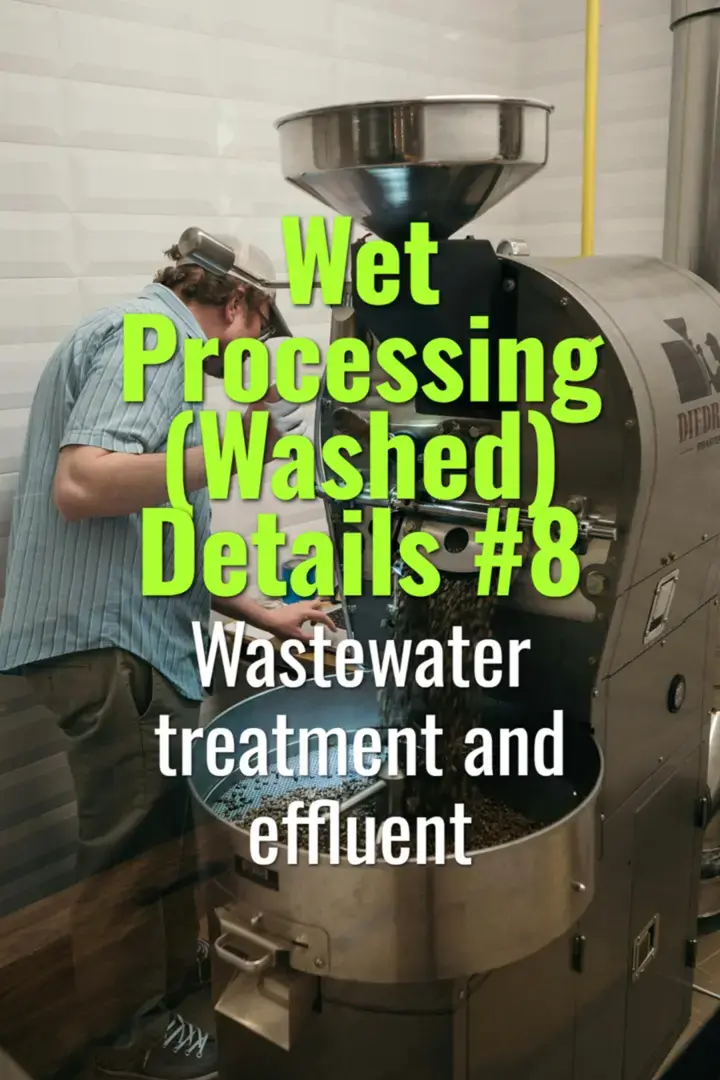Wastewater treatment and effluent
This topic explains the challenges of wastewater and effluent management in washed coffee processing, methods of treatment, and the importance of reducing environmental impact.
- Coffee Basics Nerds
- 2 min read
Article 8 of 12 in Wet Processing (Washed) Details/

Why Wastewater is a Concern
- Washed processing uses large amounts of water (20–60 L per kg parchment).
- Effluent is rich in organic matter, sugars, and acids, with high Biochemical Oxygen Demand (BOD) and Chemical Oxygen Demand (COD).
- Untreated discharge into rivers depletes oxygen, killing fish and harming ecosystems.
Sources of Wastewater
- Fermentation tanks: Residual sugars and acids.
- Washing channels: High organic load from mucilage and pulp.
- Pulping stations: Water mixed with skins and pulp.
Environmental Impacts
- Oxygen depletion in waterways.
- Foul odors and water discoloration.
- Health hazards for downstream communities.
- Soil acidification if discharged untreated.
Wastewater Treatment Methods
1. Sedimentation Ponds
- Hold effluent so solids settle before discharge.
- Low-cost, widely used.
2. Anaerobic Lagoons/Digestion
- Decomposes organic matter, sometimes producing biogas as a by-product.
3. Constructed Wetlands
- Plants (e.g., reeds, grasses) naturally filter and clean water.
- Biodiversity benefit alongside treatment.
4. Recirculation Systems
- Reuse water for pulping and washing to reduce overall demand.
5. Filtration & pH Adjustment
- Sand or charcoal filters and lime application to balance acidity.
Best Practices
- Separate pulp and wastewater streams to simplify treatment.
- Treat effluent before discharge into rivers or soil.
- Pair treatment with solid waste management (composting pulp).
Certification and Compliance
- Standards like Rainforest Alliance and Organic certification require effluent treatment systems.
- Increasingly, buyers demand proof of sustainable water practices.
Lasting Importance
Wastewater treatment is critical for sustainable washed coffee production. By investing in ponds, wetlands, or eco-pulpers, farms and mills can protect ecosystems, improve community relations, and secure long-term market access in environmentally conscious coffee supply chains.